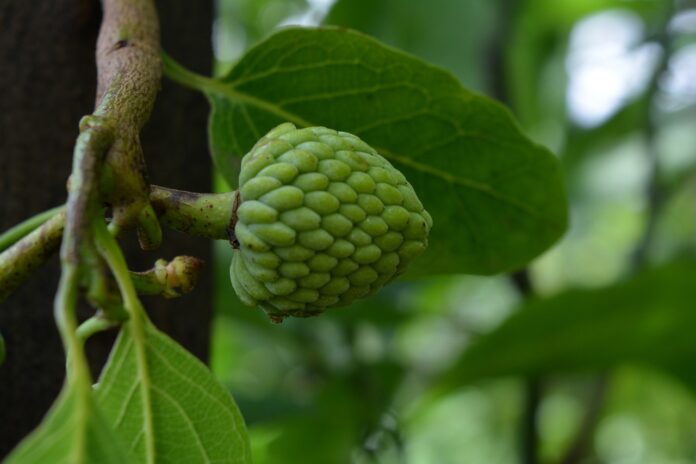Cherimoya, often called the “custard apple” or “ice cream fruit,” is a tropical fruit renowned for its unique, creamy texture and complex flavor profile. Native to the Andean valleys of Ecuador and Peru, it has spread globally and is now grown in warm climates like California, Chile, and parts of southern Spain. The fruit’s green, scale-like exterior houses a soft, white pulp that has hints of pineapple, banana, and papaya, making it a favorite ingredient in smoothies, desserts, and even some savory dishes.
Interesting Facts About Cherimoya
- Tropical Origins: Native to the Andes, cherimoya thrives in Colombia, Ecuador, Peru, and Bolivia, and has since spread to warm climates worldwide, especially in southern California and Hawaii
- Nickname: Often called “ice cream fruit,” cherimoya has a creamy, custard-like texture and flavor notes of pineapple, banana, and other tropical fruits
- Unique Appearance: The green, scaly skin of cherimoya resembles an artichoke. Inside, its creamy white flesh is speckled with large, inedible seeds that can even be toxic when crushed
- Sweet Variety of Uses: Often eaten fresh, it’s delicious in smoothies, desserts, and even cocktails. Some people enjoy it with a splash of lime juice to highlight its tropical taste
- Cultural Impact: Cherimoya holds a place as Chile’s national fruit, while in other cultures, it’s revered for its exotic flavors and medicinal applications
- Cherimoya has a unique flavor profile, often described as a blend of pineapple, papaya, banana, and strawberry, with hints of vanilla. This rich taste has earned it the nickname “custard apple” and “ice cream fruit” because its creamy texture is similar to frozen dessert when chilled.
- Mark Twain famously praised cherimoya, calling it “the most delicious fruit known to men.” This acclaim highlights cherimoya’s reputation as a luxurious and beloved tropical treat.
- The fruit is high in vitamin C—just 100 grams provides about 32% of the recommended daily intake—making it excellent for boosting immunity.
- With notable levels of potassium and magnesium, cherimoya is good for heart health and helps in regulating blood pressure, which is beneficial for cardiovascular health.
- Cherimoya is low in fat but rich in dietary fiber and protein compared to other fruits, making it a nutritious choice for improving digestion and maintaining energy levels.
- The seeds of cherimoya are toxic and should never be consumed. They contain a compound called annonacin, which can have neurotoxic effects if ingested.
- Cherimoya trees are mainly cultivated in Peru, Ecuador, and Chile, where the climate supports their growth. In the U.S., they are grown in California.
- This fruit has a short shelf life and should be consumed when ripe, as it quickly becomes soft and prone to bruising. Once ripe, it should be refrigerated and eaten within a couple of days.
- Its pulp can be eaten raw or used in recipes like smoothies, sorbets, fruit salads, and even baked goods for a tropical flavor twist.
- Besides its culinary use, cherimoya also has applications in traditional medicine, cosmetics, and even certain cultural rituals. Its extracts are used in skincare products for their moisturizing and antioxidant properties.
